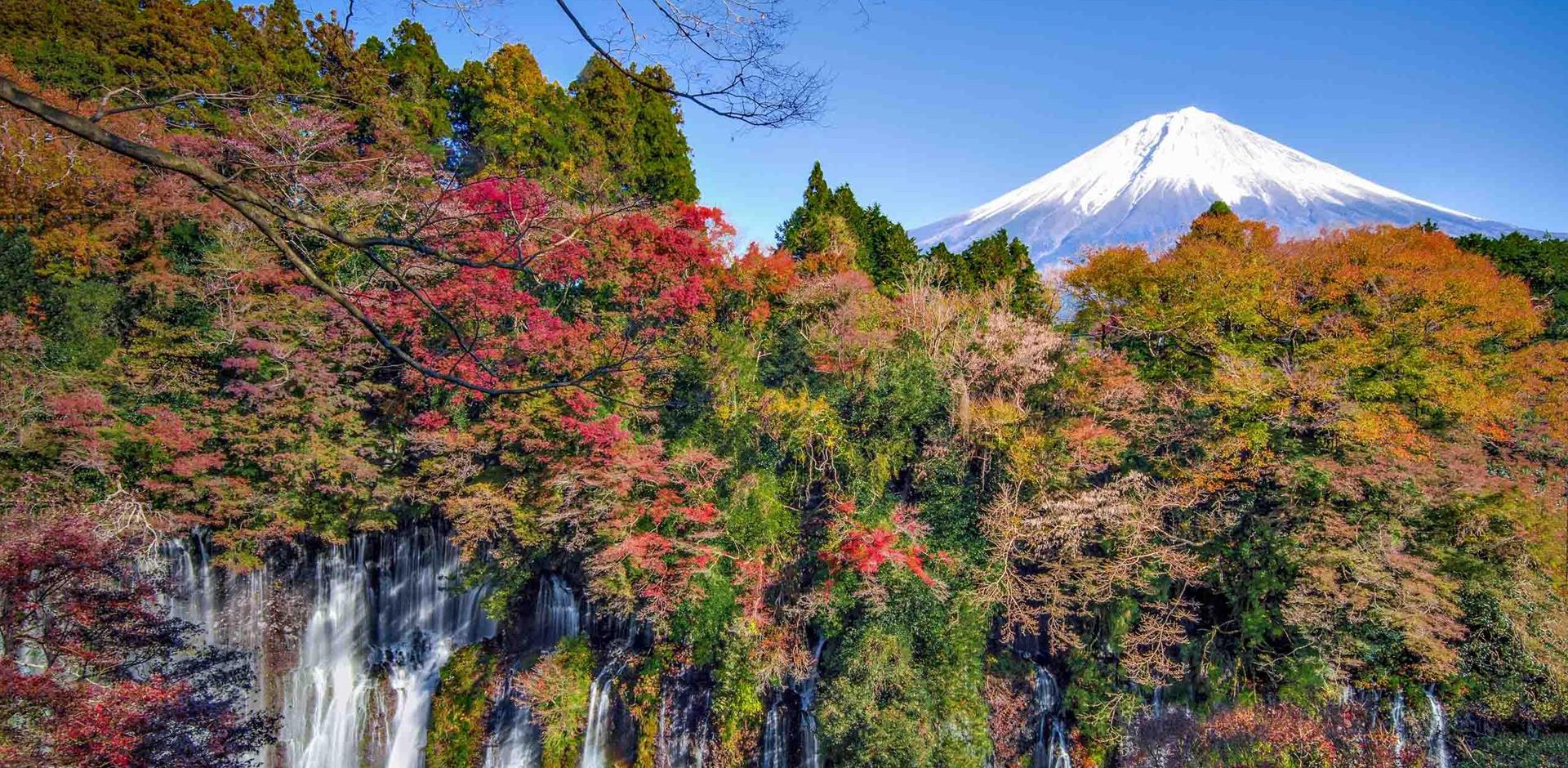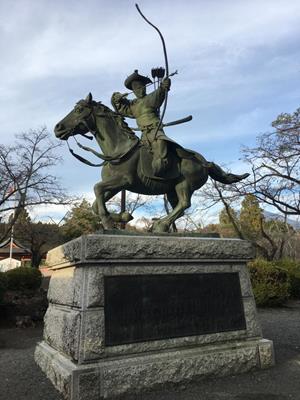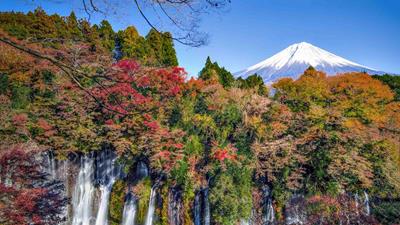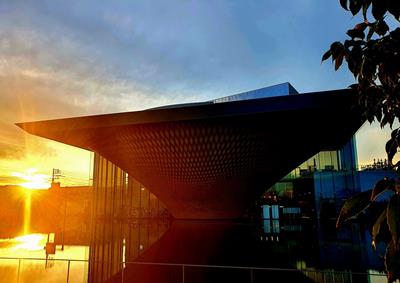
Top reasons to stay in Shizuoka
While small-group touring in Japan, Ben Coley discovers the attractions of lesser-known Shizuoka
“In chess, if you control the middle of the board, you control the game,” says Tony, our guide, a New Zealand-born devotee of the land of the rising sun. Tony is an aficionado of feudal Japan: the age of the warrior. He is explaining, with some vigour, the strategic importance of Shizuoka in the year 1192.
The first shogun, Minamoto no Yoritomo, lorded it over Shizuoka in the 12th century, occupying the crucial middle ground, flanked by Tokyo and Kyoto.
“We are talking about the first shogun… not to be confused with Richard Chamberlain’s 1980s Shogun or Tom Cruise’s Last Samurai,” says Tony, casting an eye around the group, looking to crush any lingering delusions.

Location-wise, Shizuoka in the 21st century is ideal for international travellers: just 40 minutes from Tokyo on the Shinkansen, the train which during feudal times might have been said to go like an arrow from a bow, but today takes its common name from a deadlier projectile.
Warp speed and to-the-millisecond punctuality have cemented the Shinkansen’s iconic status.
And it is with an iconic preconception in mind that most visitors come to Shizuoka – a place from which to behold the superstar stratovolcano Mount Fuji, which sits at the head of the top table of Japanese iconography. “Most people view Fuji from the north side,” says Tony, “but from Shizuoka, you can get beautiful views of Fuji across green tea plantations, or even from across the bay, out there in the Pacific Ocean.”
Tony leads us on a walking tour of Mishima, through sleepy gardens of moss-covered stone, following the winding path of streams and rivulets formed from Fuji’s meltwater. Snow thaws from the cone, rushing inwards and outwards, seeping between strata of volcanic rock, layered from a long history of violent eruptions. The water a mere dribble in places, but explosively seeking release where conditions allow. The Shiraito Falls – ‘the waterfall without a river’ – exhibits this phenomenon to astonishingly good advantage, and is a top draw for visitors to Shizuoka.

An homage to ‘Fujisan’ is indispensable, and it can be housed in only Shizuoka, its home prefecture. If you have an active volcano in your back yard, you must give vent to it, right?
Along the main route to Fujisan Sengen Shrine, we find the Mount Fuji World Heritage Centre.
Designed by Pritzker Architecture Prize-winner Shigeru Ban, this eye-catching landmark is approached via a shallow, spring-fed basin that lays down a mirrored surface to reflect (with pleasing symmetry) an inverted conical building.
No intelligences are insulted by an explanation as to why it is cone shaped.
Within, a 200-metre walkway corkscrews up to an open-air observation deck, with time lapses and interactive displays outlining formation and human interaction.
Views of Fuji will never stale (see Hokusai’s landscape prints Thirty-six Views of Mount Fuji). We breathe in another from the roof deck and are then seated in a plush mini theatre, where we are given a circling, ‘dragon’s-eye’ view of Fujisan through the seasons, accompanied by a musical score that tingles the spine not a little.

Bloodline and storyline
The next day, we pass the Mishima Taisha Shinto shrine and I ask Tony the dull, predictable question: How old is it? While delivering my perfunctory enquiry, I forget that Japan is one of the most seismically active countries on earth. “Not much of what remains is original,” he says; “here, materials are… well, immaterial. We concentrate on bloodline and storyline. Over the years, buildings like this have been swept away by typhoons and earthquakes, and it will happen again.” Tony walks on. I fall into a thoughtful state and contemplate the import of what he’s just said.
Supported by a man-made timber frame, hard by the Main Hall, is a twelve-hundred-year-old fragrant olive tree, designated as a national natural monument. It is said to be the ‘biggest’ fragrant olive in Japan, yet it stoops low to the ground, hideously attenuated, kyphotic and decrepit.
One of our number asks about the notoriously fierce Japanese winters, and what that means for tourists coming for a holiday in Shizuoka. “It’s gentler here,” replies Tony, with Kiwi-style positivity and casual inventiveness. “In Shizuoka, we have what I would call Californian mountain winters, not Alaskan winters.”
We are gifted with an insightful bon mot at every turn from this walking Wikipedia page. Unlike the water boatman skating the pond over which we stand, this man goes deep. From our surface-level enquiries, he hyperlinks out to related pages. I ask for the derivation of ‘Land of the rising sun’ and am told that from the Chinese viewpoint the sun rises above Japan. Makes sense.
Pleased with myself, I waylay the group and point out that Kiwi is an anagram of Wiki. One or two snorts of mirth, nothing more.
We learn that there are an invitingly high number of ryokans (traditional inns) in Shizuoka. Stressed on the second syllable, a ryokan is the accommodation of choice for those who place a stress on authenticity. Many noble examples exist in the Shizuoka prefecture, and many come with an onsen (an outdoor bath), which is an essential part of the experience.
We stop off at an izakaya (a bar), where I am party to an impasse at the doorway. Japanese deference has collided with English civility: an unstoppable force meets an immovable object:
“After you, sir.”
“No, no, no. You go, you go.”
“Wouldn’t hear of it, old chap. After you.”
“No, no. You go.”
I have the goodness to accede and we pass on through. Lunch is a strengthening bowl of noodles. The ensuing conversation covers sushi, sashimi and wasabi. Shizuoka is a wasabi-growing hot spot, with its temperatures in the Goldilocks 'just right' zone and its terraced fields flushed and rinsed with ever-flowing cool mountain streams.
The next day we travel to the wasabi farm in the Izu Peninsula and are disabused of the notion that wasabi is nothing more than green horseradish, pasted into tubes for the bourgeoisie.
A freshly grated rhizome of Shizuoka wasabi certainly kicks like a horse, but it comes with sweet freshness. Between this and the aforementioned substitute, there is a wide and substantial difference. And the prices it commands on the market are as eye watering as its effects on an unaccustomed palate.
“The first shogun was partial to a spot of wasabi,” says Tony.
Apparently, Minamoto no Yoritomo conjectured that it might fortify the warriors ready for battle, and ‘encouraged’ his myrmidons to consider its health benefits, which, as corroborated by 21st-century non-feudal nutritionists, are as multitudinous as the reasons to visit Shizuoka.
That said, compelling reason number one to visit Shizuoka is for its relative quiet.
Tread the ‘Golden Route’ – Tokyo, Hakone, Kyoto, Nara and Osaka – in search of Japan’s heavyweight attractions and you won’t be alone.
As a base of operations, Shizuoka has all its pieces lined up for a fulfilling yet relaxed-pace tailor-made trip to Japan. Play your opening gambit and call a travel advisor today or enquire online.
